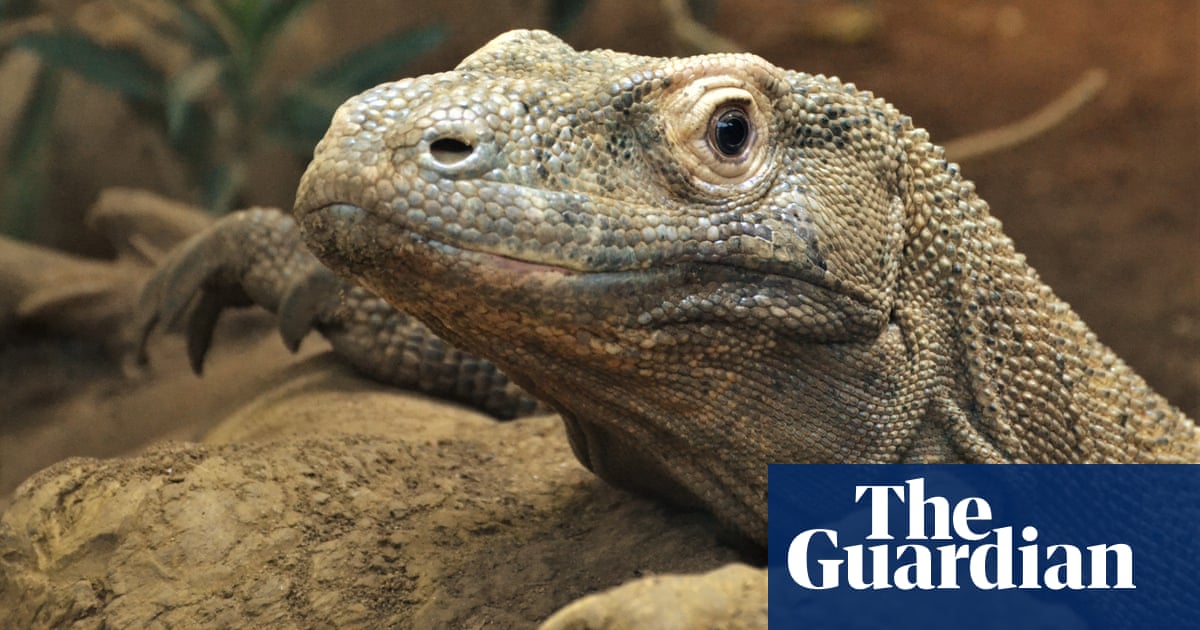With their large size, venomous bite and the fantastical connotations of their name, Komodo dragons seem like the stuff of legend.
Now, that status has been elevated further: scientists have discovered that their teeth are coated with an iron layer that helps keep the razor-sharp edges.
It’s the first time such a layer has been seen in any animal, and one the researchers describe as “a surprising and previously overlooked predatory adaptation in the Komodo dragon.”
The coating was discovered when researchers noticed that the tips and jagged edges of Komodo dragons’ teeth were covered in a layer of orange pigment. Upon closer inspection, the enamel was found to contain concentrated iron that makes the teeth incredibly hard and wear-resistant, helping the dragons rip and tear their prey.
Komodo dragons are the largest living lizards, growing to more than three meters in length and averaging 80 kg in weight. They are native to several Indonesian islands, where they eat almost any prey, from small birds to water buffalo and other Komodo dragons.
People have also been killed by lizards. In 2007, a child on Komodo Island died after being attacked by one of the animals. Two years later, a fruit picker on the island was killed by two animals after falling from a tree. In 2010, another Indonesian worker had a narrow escape after hitting a Komodo dragon and breaking free from its jaws.
Indonesian authorities considered banning tourists from the island due to concerns that the visitors were affecting the animals’ mating habits and causing them to become tame due to food handouts. The species is threatened with extinction due to habitat destruction and poaching, with only about 3,500 left in the wild.
In the latest study, a team led by researchers at King’s College London used advanced imaging, along with chemical and mechanical analytical techniques, to study teeth taken from various specimens of the Komodo dragon, as well as many other reptiles. others living and extinct, including monitor lizards, crocodiles. , alligators and dinosaurs.
The iron coating was most evident on the teeth of the Komodo dragon, but similar iron-rich coatings were seen on the teeth of other reptiles. “It looks like it might be a really overlooked but widespread feature of reptilian teeth,” said Aaron LeBlanc, a lecturer in dental biosciences at King’s College and lead author of the study.
The curved and serrated teeth of Komodo dragons are shaped like those of carnivorous dinosaurs, such as Tyrannosaurus rex. In the study, published in Nature Ecology & Evolution, LaBlanc and his team tried to use the similarity to learn more about how dinosaurs’ teeth might have been used when they were alive.
Although they identified a hard layer of iron in many of the teeth of living reptiles, they failed to find evidence of it in any of the dinosaur fossils. Ironclads may still have been present in carnivorous dinosaurs, researchers believe. Iron may simply have been lost over time, as suggested by the fact that it could not be found in the fossilized teeth of reptiles closely related to Komodo dragons.
Owen Addison, a professor of oral rehabilitation at King’s College and senior author of the study, said the discovery could eventually lead to new dental techniques that could be used in humans. “We think there is an opportunity to use the structure discovered in this work to inform new strategies to regenerate enamel in humans,” he said.
